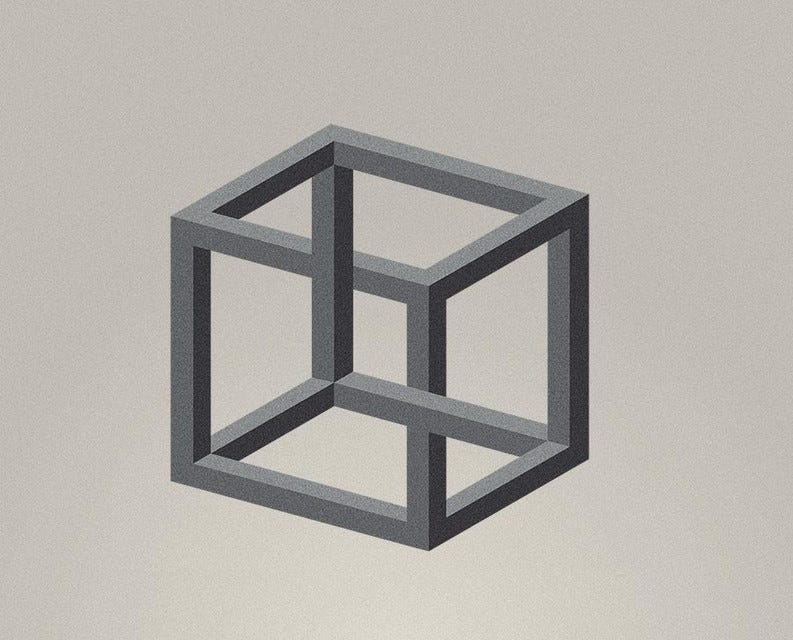The Necker Cube
Possibilities of 4D Consciousness & Multi-Dimensional Consciousness Theory (MCT)
The Necker cube is an optical illusion that demonstrates our ability to perceive “two different spatial orientations or dimensions” for the same object. While the cube is a 2D drawing, it represents a 3D object, and the viewer can switch their perception between two different 3D configurations. The Necker cube principle revolves around bistability - the cube can be perceived in two different ways because it's a two-dimensional representation of a three-dimensional object, and our “mind” can interpret the image from two different three-dimensional perspectives.
The necker cube can serve as an illustrative tool. Our consciousness ability to interpret the two-dimensional drawing of the Necker Cube as a three-dimensional object hints at the possibility of an inherent capability to perceive beyond our immediate dimensional bounds. It demonstrates the possibility of the ability to mentally perceive objects in dimensions higher than those of the object's original representation. If we look closely at this principle, the bistable perception - the flipping between the two possible cube orientations - demonstrates our cognitive flexibility. It could be seen as a metaphorical demonstration of the dynamic nature of consciousness, especially if we consider the possibility of a consciousness that operates beyond our familiar three dimensions.
For all my current research and studies coming in future posts of my work, this metaphor of the Necker cube and 4D geometry and mathematics will guide us throughout the exploration of the possibilities of the consciousness being fourth dimensional and the existence of higher dimensions, providing a tangible connection between abstract theory and observable phenomenon.
The illusion of this cube was created and named after Swiss crystallographer Louis Albert Necker, who first published it in 1832. Its truly amazing how so much potential and possibilities lies within simple geometry and mathematics. It’s from simple things complexity is build on and patterns emerge.
Consciousness might operate in four dimensions, influencing our neurobiological structures and processes. This doesn't necessarily mean our brains are physically four-dimensional. Instead, our brains might be three-dimensional 'receivers' or 'transducers', channeling the multidimensional aspects of consciousness into our three-dimensional world. This might have significant implications for neuroscience. For instance, it could shed new light on the neural correlates of consciousness - those regions of the brain that seem to 'light up' when we're conscious of something. Rather than simply being the 'generators' of consciousness, these regions might be the points where four-dimensional consciousness interacts most directly with our three-dimensional brains energy fields.



This is fascinating stuff. I just finished reading a few of Carlo Rovelli’s books. I don't know what your thoughts are on him. His books are accessible. I was able to follow them, mostly. Retaining the information is a different story. I don't doubt there is a fourth dimension. Our brains process very little of what's out there.